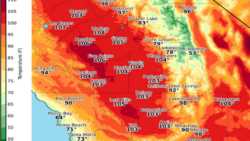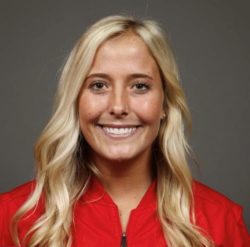01.09.23
COVID-19 Update: Cal/OSHA Is Ready to End Exclusion Pay Requirements
COVID-19
The “exclusion pay” requirement is almost behind us – but not quite. 
“Exclusion pay” refers to the requirement that an employer maintain “an employee’s earnings, wages, seniority, and all other employee rights and benefits” if the employee is excluded from work for work-related COVID exposure. This benefit was part of part of the original COVID-19 emergency standard, first passed by Cal/OSHA at the end of 2020.
Normally, an emergency temporary standard passed by Cal/OSHA has a short shelf-life. This is by design, encouraging rule makers to follow the strict administrative process for passing regulations. As you know, the COVID-19 standard was extended multiple times, and a December 2021 executive order allowed this emergency standard to continue through the end of 2022.
As the emergency standard expiration deadline loomed, the Cal/OSHA Standards Board was divided by the issue of exclusion pay, with labor advocates pushing for its inclusion in the new non-emergency standard (“non-emergency” because most requirements expire after two years). However, Cal/OSHA ultimately removed it from the standard that they adopted on December 15, 2022.
But don’t be too hasty. The standard does not go into effect until approved by the Office of Administrative Law, and OAL rules dictate that when a regulation is adopted and sent for review, the emergency regulation remains in effect during OAL’s review, up to 30 working days. This means that the emergency COVID-19 standard – technically set to expire last week on December 31 – could potentially extend into February. It remains active today.
The OAL could grant approval of the non-emergency standard sooner than that, of course. For now, though, employers should continue to provide exclusion pay. Sierra HR will update clients as soon as we know an official exclusion pay end date.
You can find the non-emergency COVID standard here.
As always, Sierra HR Partners is here to help you navigate the ever-changing landscape of COVID-19 precautions and paid leave benefits. Please contact one of our Consultants with any questions you have.
09.02.22
High Heat Advisory for Outdoor Workers : Cal/OSHA Announces Targeted Inspections
HR NEWS
If you’re like us, you’ve been nervously watching the weather forecast showing local temperatures climbing over 110 degrees through the next week. Be sure your outdoor employees have the proper education and heat illness protections, and your business is ready for a potential Cal/OSHA inspection!
Today, September 2, 2022, Cal/OSHA issued an announcement regarding targeted inspections for several outdoor industries over the next week. Employers in the construction, agriculture, tree-trimming, landscaping, car wash and warehouse industries should take extra precautions for all employees working outdoors and should ensure that company heat illness plans and recordkeeping are up to date.
In a news release last week, the California Department of Industrial Relations reminded employers, “Cal/OSHA’s heat illness prevention standard applies to all outdoor worksites. To prevent heat illness, the law requires employers to provide outdoor workers fresh water, access to shade at 80 degrees and whenever requested by a worker, and cool-down rest breaks in addition to regular breaks.” Employers must “maintain a written prevention plan with training on the signs of heat illness and what to do in case of an emergency.”
If you would like assistance with your high heat procedures or your Heat Illness Prevention Plan, please contact one of the certified Consultants at Sierra HR Partners or Cal/OSHA’s consultation services.
09.02.22
HR Headliner: September 2022
HR Headliner
Supplemental Paid Sick Leave To Be Extended… Again
Much like the cat who (we thought he was a goner but he…) kept coming back, California’s supplemental paid sick leave program is sticking with us, at least through the end of this year. (If you didn’t pick up the reference to the Laurie Berkner song, click here to enjoy!)
Our current supplemental paid sick leave (SPSL) program was implemented in February 2022 (backdated to January 1st) and was set to expire on September 30, 2022. However, Assembly Bill 152 (passed in August by the state Assembly and Senate, and now awaiting Governor Newsom’s signature) will extend the deadline to December 31st.
What Stays The Same?
SPSL will continue to apply only to employers of 26 or more employees. The bill does not change the qualifying reasons for an employee to use SPSL benefits, and does not replenish the available “buckets” of paid time off. If an employee has already used the maximum amount of SPSL, he/she is not entitled to any additional payments.
What Will Change?
Employers will be permitted to require additional diagnostic testing to confirm the need for ongoing SPSL payments. Under the current rules, an employer can require the employee to take a diagnostic test five days after the originally-reported test was taken. The new law will allow a second diagnostic test to be required at least 24 hours later. Employers must make these tests available to employees at no charge.
AB 152 establishes a grant program to assist small businesses (26-49 employees) and non-profit organizations that incur SPSL expenses. Qualified employers could be eligible for up to $50,000 of aid through January 1, 2024. The list of criteria for being deemed a “qualified” small business is extensive, and you may want to consult with legal counsel prior to beginning a claim for these funds.
Please join us in welcoming Spencer Sansom to our Sierra HR team!
Spencer obtained her undergraduate and post-graduate degrees from Ohio State University with a focus on education and management, while being a part of their Women’s Softball team.
Prior to joining Sierra HR, she worked in the Recruiting and Staffing industry in Columbus, Ohio. Outside of work, she spends time with her family and her two dogs. We’re thrilled to have Spencer’s talents as part of our recruiting and background investigation services.
08.11.22
HR Headliner: August 2022
HR Headliner
“On Demand”… It’s Not Just For Movies Anymore
Over the past year, many employers have faced significant challenges in attracting and retaining employees in this new job seeker market. Top candidates are often fielding multiple interview requests and job offers, and seem to “ghost” recruiters without hesitation when something better comes along. 
Companies looking to entice qualified applicants are offering a range of perks such as signing bonuses, remote work, wellness benefits, and pay on demand.
Did that last one catch your attention? Pay on demand? According to a Zip Recruiter survey, it is a fast-growing benefit, jumping 233% between 2019 and 2022. In a world where we can order groceries with the swipe of a finger for same-day delivery, employees increasingly appreciate having access to earnings without concern for a pesky detail like pay day.
Also known as earned wage access (EWA), on demand pay allows employees to request wages as they’re earned, as frequently as after each shift. Funds are loaded onto a pre-paid debit card or deposited in the employee’s bank account. Employers can place a maximum limit on this early access, with the balance being paid on the next regular pay day. EWA is promoted as a way to improve engagement and help employees maintain financial stability and find a healthy work/life balance.
However, there are potential downsides for employees, such as the administrative costs for on demand service, which are often passed along by employers and can add up quickly. Getting paid every day could actually create more financial stress because people may not set priorities for how the money is spent. For employers, any potential benefits may be outweighed by legal compliance and cash flow concerns.
On demand pay is certainly a sign of our changing times! Click here to share your thoughts on this topic in our Reader Poll.
07.06.22
Heat Illness – Planning and Prevention
HR Headliner
Heat Illness – Planning and Prevention

Ahhhh, Central Valley summers… those months when anything below 90 degrees feels downright refreshing and finding a shady parking spot is like winning the lottery.
 If you have employees working outdoors, this is also the season to be vigilant about heat illness prevention and response. Cal/OSHA’s Heat Illness Prevention Standard sets forth several requirements for California employers:
If you have employees working outdoors, this is also the season to be vigilant about heat illness prevention and response. Cal/OSHA’s Heat Illness Prevention Standard sets forth several requirements for California employers:
• Establish, implement, and maintain an effective Heat Illness Prevention Plan.
• Ensure employees are provided with potable water that is “fresh, pure, suitably cool, and provided to employees free of charge.”
• Ensure appropriate access to shade when the outdoor temperature exceeds 80 degrees Fahrenheit, or upon employee request.
• Allow employees to take a cool-down rest in the shade for no less than five minutes, when needed to prevent heat illness.
• Provide effective training to employees and supervisors regarding heat illness factors, prevention, recognition, and response.
• Certain industries including agriculture, construction, and landscaping, must also develop and implement high-heat procedures when the temperature exceeds 95 degrees.
Even if your employees do not work outdoors, Cal/OSHA’s Injury & Illness Prevention Standard requires companies to address possible health and safety hazards, which may include indoor heat. Be sure to stay aware of workplace spaces that are not air conditioned or have poor air circulation, where the steps above may be needed to keep employees safe.
Cal/OSHA has recently updated its Special Emphasis Program related to heat illness prevention, which specifically states that all heat-related complaints will be addressed by on-site inspection within three working days of receipt by the Division.
Contact one of our certified Consultants if you have questions about developing a Heat Illness Prevention Plan for your business or compliance with other Cal/OSHA requirements. The California Department of Industrial Relations offers a variety of heat illness prevention training tools and publications, as well.






 If you have employees working outdoors, this is also the season to be vigilant about heat illness prevention and response.
If you have employees working outdoors, this is also the season to be vigilant about heat illness prevention and response.